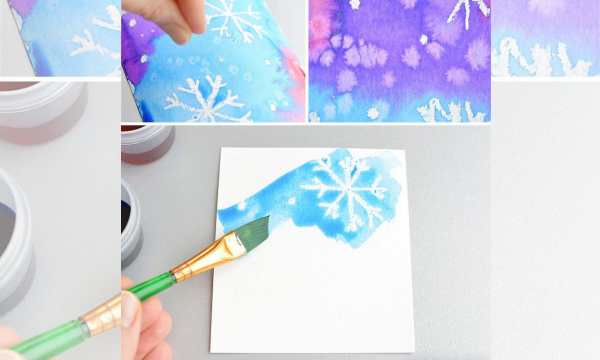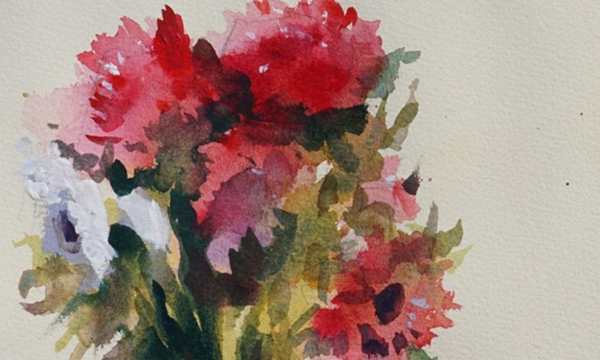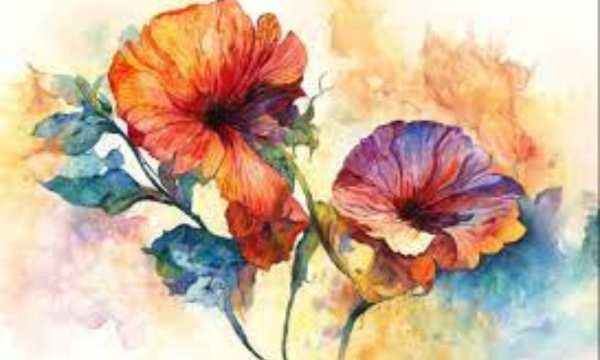Artists can create beautiful, transparent works of art using watercolor, an engaging and expressive medium.
Ad
Mixing is one of the most important things that makes watercolor painting so beautiful. If you want your art to have smooth transitions, bright colors, and balance, it’s important to learn how to mix watercolors. This guide will show you different ways to mix colors, which will help you make your watercolor paintings look better.
1. Understand the Characteristics of Watercolor:
Before you start learning how to mix colors, you need to understand how watercolors work. It depends on how the paint, water, and paperwork together to make the watercolor clear and smooth. Watercolor is not opaque like other paints; it lets light through, making it look bright. To be able to paint watercolors well, you need to know how paint mixes with water and how paint reacts with paper.
Ad
2. Choose the Right Paper:
The type of paper you use has a big impact on how your watercolors blend. There are different types of watercolor paper, such as rough, cold-pressed, and hot-pressed. Rough paper has more texture, making blending more unpredictable, while heat-pressed paper has a smoother surface, making blending more precise. Try mixing up a few different types of paper until you find the one that suits you best.
3. Quality Brushes and Paints:
Spending the money on good brushes and paint will help you blend better. Soft brushes with natural bristles work best when blending watercolors because they can hold more water and make the strokes smoother. Good pigments make colors more vibrant and diffuse, making them easier to mix.
Ad
4. Wet-on-wet Method:
With the wet-on-wet method, you paint something wet over something wet. Prepare the paper for painting by moistening it first so that the colors blend easily. You can use this method to create soft backgrounds, mood effects, and eye-friendly color gradients. Vary the amount of paint water you use to determine how much it mixes.
5. How to Use Dry Brushing:
When you use the dry brush technique instead of wet-on-wet, you apply dry paint to dry paper. This method creates a structured and grainy look, allowing you to blend in a controlled manner. To get sharper edges and better definition in your painting, use a dry brush and a small amount of water. The dry brushing method is ideal for adding texture to objects such as rocks, bark, and fur.
6. Glasses:
Adding a bright wash of color to a dry surface is glazing. By adding one color at a time, this method allows you to create depth that is not possible with a single layer. Glazing allows you to add light to your watercolor paintings, making them look richer. To prevent the color from becoming muddy, wait until each glaze is completely dry before adding the next.
7. Lifting and Blotting:
If you make a mistake in a watercolor painting, you can easily erase or remove it. To remove excess paint or desired lighting spots, use a clean, damp brush or paper towel. This method is especially effective when you want to add accents or fix minor mistakes. Practice control and accuracy, being careful not to damage the paper surface.
8. Different Washing Methods:
To achieve a smooth transition from light to dark or from dark to light, you need to master the technique of gradual washing. Begin painting by applying a light wash to the top of the area you want to cover. As you go down, add more paint to each stroke. If you tilt the paper slightly, gravity will help the colors blend better. This method is typically used for backgrounds, skies, and large, clean areas.
9. Graffiti Method:
Multi-color painting involves scraping or scratching paint that is only partially dry to expose the underlying layers. This method can give your watercolors more depth and visual interest. Use something sharp, such as a brush or the back of a palette knife, to scratch the surface. Try different angles and pressure to get different textures.
10. Masking Fluid:
Masking fluid allows you to keep parts of your painting intact and make highlights stand out. Before painting, apply masking fluid to the area you want to keep clean. After painting and drying, remove the masking fluid to reveal the untouched paper. This method is ideal for capturing glare in water, light in the eyes, or small details.
11. Extensive Technology:
Each mixing technique is useful in its own right, but using multiple mixing techniques at the same time can make your watercolor look more interesting. Try adding a wet-on-wet wash to a dry brush detail, or mix lifting and blotting effects into a graduated wash. Watercolor is beautiful because it can be used in so many ways, so don’t be afraid to try new things and combine techniques to get the effect you want.
12. Work Hard and Be Patient:
To become good at mixing watercolors, you need to practice regularly and be patient. You have to take the time to try new things and accept that you will make mistakes along the way. If you learn from your mistakes, you will become a better watercolor artist. You can improve your drawing skills and learn how different colors work together by keeping a sketchbook or practice pad.
Conclusion
All in all, mixing watercolors is a complex and fun part of painting. By understanding the properties of watercolor, choosing the right watercolor materials, and trying different techniques, you can make your art more refined. Remember, you can only get better at something if you do it over and over again. Enjoy the process, stay interested, and let the fluidity of watercolor inspire your art.
FAQs
1. How do you mix watercolors? Why is it important in painting?
Mixing watercolors means putting different colors and shades together without noticeable gaps. Smooth transitions, vibrant colors, and a sense of balance are very important in watercolor painting.
2. How do papers differ when mixing watercolor paints?
The roughness of the watercolor paper and whether it is cold or hot-pressed greatly affects how it blends. Rough paper has more texture and blends less well, but heat-pressed paper has a smoother surface and blends more accurately.
3. What are some important tools for mixing watercolors?
To blend watercolor properly, you need a good quality brush with natural bristles, quality paint, and masking fluid. Soft brushes and bright pigments create smooth strokes and color separations. Masking fluid helps protect certain areas of the painting.
4. Can you explain the wet-on-wet method of mixing watercolors?
With the wet-on-wet method, you paint something wet over something wet. Prepare the paper for painting by moistening it first so that the colors blend easily. It can be used to create gradients, soft backgrounds, and mood effects.
5. What is the difference between wet-on-wet brushing and dry brushing?
When you use the dry brush technique instead of wet-on-wet, you apply dry paint to dry paper. This method creates a grainy and structured effect, allowing you to mix colors in a controlled way. It is often used to add detail to surfaces such as rocks, bark, or fur.
6. What is varnishing and how does it help you mix watercolors?
Adding a bright wash of color to a dry surface is glazing. This allows the artist to slowly add more color, giving the watercolor more depth and richness. Each glaze must be completely dry before the next coat is applied.


